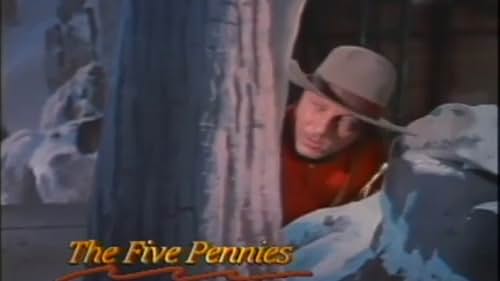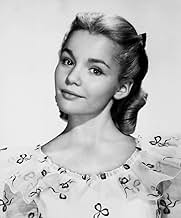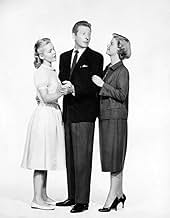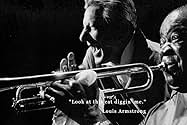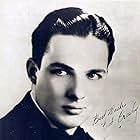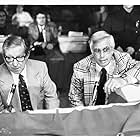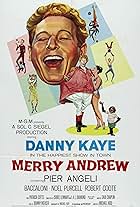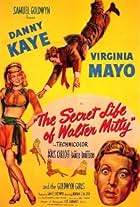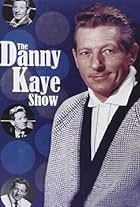IMDb RATING
7.1/10
2.1K
YOUR RATING
Danny Kaye cuts loose with his trademark musical clowning. Louis "Satchmo" Armstrong plays his horn and croons in that famed gargling-granite voice. Big Band icons Bob Crosby, Ray Anthony an... Read allDanny Kaye cuts loose with his trademark musical clowning. Louis "Satchmo" Armstrong plays his horn and croons in that famed gargling-granite voice. Big Band icons Bob Crosby, Ray Anthony and Shelly Manne join the fun.Danny Kaye cuts loose with his trademark musical clowning. Louis "Satchmo" Armstrong plays his horn and croons in that famed gargling-granite voice. Big Band icons Bob Crosby, Ray Anthony and Shelly Manne join the fun.
- Nominated for 4 Oscars
- 2 wins & 8 nominations total
Eric Alden
- Musician
- (uncredited)
Babette Bain
- Rehabilitation Patient
- (uncredited)
Bill Baldwin
- Announcer
- (uncredited)
Sheryn Banks
- Girl at Birthday Party
- (uncredited)
Earl Barton
- Choreographer
- (uncredited)
Henry Beau
- Undetermined Secondary Role
- (uncredited)
Storyline
Did you know
- TriviaWhile Danny Kaye worked hard to be able to accurately fake playing cornet (he practiced for months learning the fingering of the instrument), it was the real Red Nichols who provided all of the cornet playing for Kaye in this movie.
- GoofsAfter Red and Willa have left the club and are traveling home, the cars seen through the rear window of the taxicab are distinctly 1940's to 1950's vehicles which were nonexistent in 1924.
- Quotes
Louis Armstrong: Excuse it, folks. Somebody must have put alcohol in our liquor.
- ConnectionsFeatured in American Masters: Danny Kaye: A Legacy of Laughter (1996)
- SoundtracksThe Five Pennies
(1959)
Words and Music by Sylvia Fine
Sung by Danny Kaye (uncredited) to Dorothy
Performed by Eileen Wilson (uncredited) at the comeback show
Featured review
This little gem can be appreciated on two levels. Non-jazz fans who have never heard of Red Nichols will find a fine little "family movie," which despite its 192O's-speakeasy milieu offers up nothing seamier than the observation by Red's wife, Bobbi (Barbara Bel Geddes in a performance of remarkable warmth) that their daughter has come to believe that "breakfast is a cup of coffee and an aspirin." The story of the daughter's attack of polio and her fight to walk again is unflinching and the first-time viewer should pack sufficient Kleenex. Fans of Danny Kaye will find plenty of examples of his trademark clowning, but they'll also find moments of wonderful dramatic and introspective acting.
The most remarkable scene in the movie: a guilty Nichols/Kaye, feeling that his daughter's polio is the direct result of his neglect of her in favor of jazz, promises God that if she survives, he will give up music and devote himself to her care. Sound hokey? Could have been. But the scene where Kaye throws his cornet into the river is absolutely spine-chilling. He stops, tenderly caressing the cornet keys, allowing the happy memories to pass wistfully over his features...then coldly, abruptly, tosses the instrument into the waters below. When Kaye straightens up, he seems to have aged twenty years and gained fifty pounds...a remarkable scene.
The second level on which the film can be appreciated: an introduction to a wonderful musician. Like "The Glenn Miller Story" and "The Benny Goodman Story," "The Five Pennies" makes little attempt to give an accurate portrayal of its subject. Ernest Loring Nichols, from all accounts, was a cool, calculating businessman, nothing like the madcap, freewheeling character played by Danny Kaye. As a cornetist he stood willingly in the shadow of his idol Bix Beiderbecke, whose playing style he strove (with some success) to duplicate. Despite the fact that Bix was the major personal and professional influence on Red, he is mentioned only once, toward the end of the film: "(in those early days) there was Louis (Armstrong), Bix and me--and that was it!"
Biographical inaccuracies aside, the pure tone of the real Nichols' cornet shines through brilliantly, and reaches out to grab the ear of the traditional jazz fan--at least it did mine. When I first saw the film in '81, I was a Glenn Miller and Benny Goodman fan, and knew Nichols only as a bandleader they had played with early on. The movie was a springboard, leading me to search out the albums, and the real biographical details, of the very real Red Nichols.
Incidentally, the film benefited the by-then largely forgotten Nichols greatly: just as the late-5O's dixieland-revival was gathering steam, he landed a Columbia contract, and recorded some wonderful stereo albums of his past hits--and of the music specially written for the film by Silvia Fine (Mrs. Danny Kaye). Though he died in '65 (while in Vegas to play a gig), his music lives on through these wonderful albums --and through the soundtrack on Decca, featuring not only Nichols but Louis Armstrong. Their duets, through placed in fictionalized scenes, stand as a legitimate audio document of two of the earliest and most influential cornetist/trumpeters in history playing together--in glorious, analog stereo. I'll join the others who've commented on this film in wishing that this wonderful soundtrack would be released on CD. (Not outside the realm of possibility: the soundtrack of "Pete Kelly's Blues, from the same time period, has just appeared on CD...so who knows?)
For both traditional jazz fans, and those who appreciate wholesomely uplifting (but NOT goody-goody) film, this movie is a treasure.
The most remarkable scene in the movie: a guilty Nichols/Kaye, feeling that his daughter's polio is the direct result of his neglect of her in favor of jazz, promises God that if she survives, he will give up music and devote himself to her care. Sound hokey? Could have been. But the scene where Kaye throws his cornet into the river is absolutely spine-chilling. He stops, tenderly caressing the cornet keys, allowing the happy memories to pass wistfully over his features...then coldly, abruptly, tosses the instrument into the waters below. When Kaye straightens up, he seems to have aged twenty years and gained fifty pounds...a remarkable scene.
The second level on which the film can be appreciated: an introduction to a wonderful musician. Like "The Glenn Miller Story" and "The Benny Goodman Story," "The Five Pennies" makes little attempt to give an accurate portrayal of its subject. Ernest Loring Nichols, from all accounts, was a cool, calculating businessman, nothing like the madcap, freewheeling character played by Danny Kaye. As a cornetist he stood willingly in the shadow of his idol Bix Beiderbecke, whose playing style he strove (with some success) to duplicate. Despite the fact that Bix was the major personal and professional influence on Red, he is mentioned only once, toward the end of the film: "(in those early days) there was Louis (Armstrong), Bix and me--and that was it!"
Biographical inaccuracies aside, the pure tone of the real Nichols' cornet shines through brilliantly, and reaches out to grab the ear of the traditional jazz fan--at least it did mine. When I first saw the film in '81, I was a Glenn Miller and Benny Goodman fan, and knew Nichols only as a bandleader they had played with early on. The movie was a springboard, leading me to search out the albums, and the real biographical details, of the very real Red Nichols.
Incidentally, the film benefited the by-then largely forgotten Nichols greatly: just as the late-5O's dixieland-revival was gathering steam, he landed a Columbia contract, and recorded some wonderful stereo albums of his past hits--and of the music specially written for the film by Silvia Fine (Mrs. Danny Kaye). Though he died in '65 (while in Vegas to play a gig), his music lives on through these wonderful albums --and through the soundtrack on Decca, featuring not only Nichols but Louis Armstrong. Their duets, through placed in fictionalized scenes, stand as a legitimate audio document of two of the earliest and most influential cornetist/trumpeters in history playing together--in glorious, analog stereo. I'll join the others who've commented on this film in wishing that this wonderful soundtrack would be released on CD. (Not outside the realm of possibility: the soundtrack of "Pete Kelly's Blues, from the same time period, has just appeared on CD...so who knows?)
For both traditional jazz fans, and those who appreciate wholesomely uplifting (but NOT goody-goody) film, this movie is a treasure.
- How long is The Five Pennies?Powered by Alexa
Details
- Runtime1 hour 57 minutes
- Aspect ratio
- 1.85 : 1
Contribute to this page
Suggest an edit or add missing content


